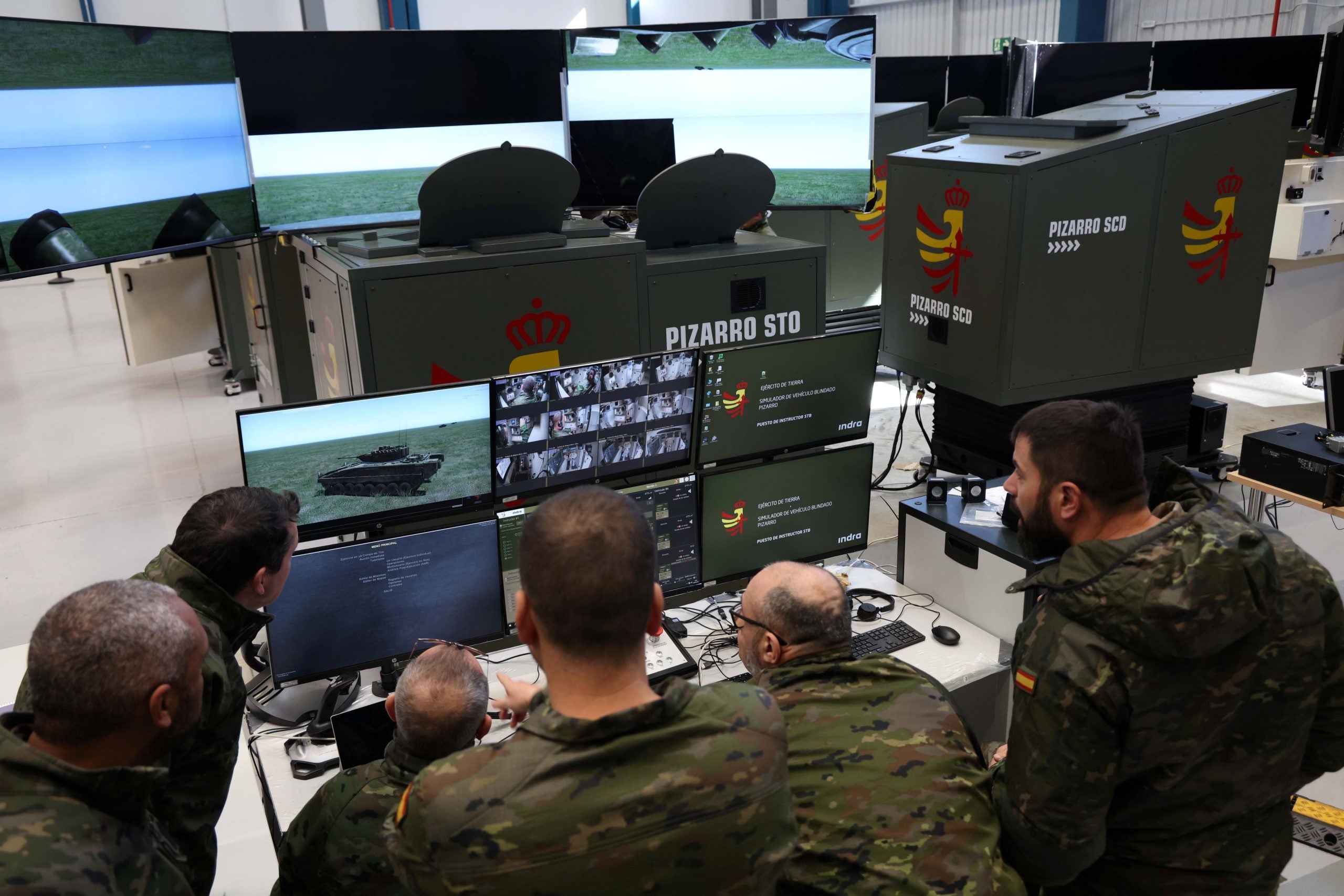
Indra, a technology and consulting company, created an armoured tactical training network by installing the first Pizarro simulators.
Indra, a leader in technology and consulting, has commenced the delivery of Pizarro infantry combat vehicle simulators to Spanish Army bases where these armoured vehicles are currently deployed.
The simulators, designed to complete operator training, comprise a comprehensive simulation network featuring 56 connected compartments. The network will facilitate joint tactical exercises that closely resemble real combat situations.
Each Pizarro vehicle simulator comprises two training compartments: one for the driver and another for the vehicle commander and gunner. Integrating these 56 compartments into the simulation network will enable soldiers to engage in collaborative exercises that prepare them for complex missions.
Serious games software for the simulation
Indra’s simulation system seamlessly integrates with the Army’s existing training platform based on serious games.
This software enables soldiers to interact with various troops, platforms, threats, and scenarios in a virtual field of operations, thus enhancing their readiness for real-world missions.
By leveraging these technologies, the Army can simulate large-scale operations involving thousands of soldiers, hundreds of vehicles, helicopters, and drones.
“The Pizarro vehicle simulator capitalizes on the new technologies linked to virtual reality and gamification and maximizes the communication and interoperability capabilities of the systems”, explains Rafael Junco, Indra’s Simulation Director.
To showcase their innovative solution, Indra will present a Pizarro vehicle simulator at their stand during FEINDEF, the premier Defense and Security sector forum in Spain, held from May 17th to 19th in Madrid.
The simulation system developed by Indra faithfully replicates the two existing configurations of the Pizarro armoured vehicle: Phase I and Phase II. These vehicles are designed for rapid movement on the front lines of combat, carrying a platoon of soldiers.
Moreover, the simulators can be networked with other simulators in different geographical locations, facilitating joint exercises and collaboration with other simulation systems available on the Army’s training platform.
The General Directorate of Armament and Material of the Ministry of Defence and the Army actively participated in developing the Pizarro simulator at all stages, from requirements analysis to final testing and integration into the training network.
Simumak, a subsidiary of Indra, utilized its hardware development expertise to manufacture the simulator cabins, replicating the measurements and functional instrumentation of the actual vehicle. This collaboration has expedited development, enhanced flexibility, and reduced time-to-deployment.
The virtual training provided by Indra’s simulators accelerates mission preparation, closely mimicking real-life scenarios, and offers cost savings.
Maintenance and fuel expenses are reduced by reserving real vehicles for higher-level exercises and actual operations. Indra boasts a range of mission simulation systems that cater to soldiers with different profiles.
Notably, the company has supplied the Ukrainian troops with the full Leopard 2E tank simulation training system and provided the Spanish Armed Forces with fifty Víctrix simulators, enabling soldiers to train with their weapons.
Indra’s expertise extends to simulators for fighter jets, planes, helicopters, and advanced air traffic control systems.
With the installation of the first Pizarro simulators and establishment of the armoured vehicle tactical training network, Indra reinforces its commitment to equipping soldiers with training tools, enhancing their preparedness and effectiveness in the field.
According to GlobalData’s “Spain Defense Market 2023-2028” report, Indra, alongside others, is one of the primary suppliers of the New Generation Fighter -Future Combat Air System.
The Future Combat Air System is a joint program between Spain, France and Germany to provide advanced combat aircraft, drones, and sensor capabilities.







